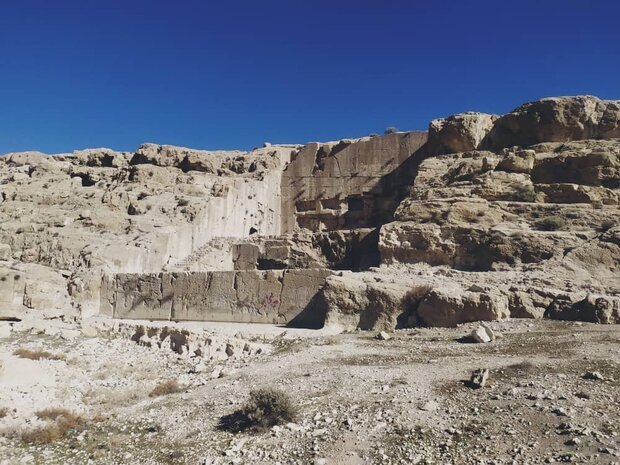Qadamgah of UNESCO-tagged Persepolis to be documented

TEHRAN – A documentation and clean-up project will soon be commenced on Qadamgah, a post-Achaemenid rock-cut monument which is located near the UNESCO-registered Persepolis.
Qadamgah or Chasht-Khor is unique in terms of the volume of masonry and mountain cutting, Hamid Fadai, director of the World Heritage site announced on Wednesday.
“By looking at the style of carving and also the signs of masonry tools and also comparing this place with the Achaemenid [rock-carved] tombs that were built in the heart of the mountain, the construction of the porch of Qadmagah is a reminder of the Achaemenid period,” the official explained.
Situated some 40 km south of Persepolis, Qadamgah consists of three platforms with rear walls and staircases and features cavities on the back wall and a now-dry spring and pond at the bottom.
Its function, however, has been a matter of debate, with the latest research pointing to a religious function related to the holy element Water.
The monument was first discovered by Capt. H. L. Wells (from the Royal Engineers) in 1881 who published a drawing of the plan and section of it, but did not describe it. The structure and its purpose was later discussed by Forsat-od-Dowleh (1854–1920), Louis Vanden Berghe (1954), Giorgio Gullini (1964), Mohammad Taqi Mostafavi (1964), Calmeyer (1975), Rémy Boucharlat (1979), Kleiss (1993), and Jean-Claude Bessac (2007).
The structure has been built by cutting two deep terraces vertically from the top of the rocky limestone slope, forming three superimposed platforms with vertical rear walls. The monument lacks any built structures. Underneath the lower terrace, there has been a now-dry spring feeding a pool that overlooked the monument. The terraces are 13.50 meters wide.
The lower terrace is 3 meters above the ground. The upper terrace, which is 4.25 meters higher, is linked to the lower one by two rock-cut staircases on the sides. Three rows of five shallow cavities have been cut in rectangular form into the back wall above the upper terrace. Several shallow, hemispherical holes are also cut along the edge of the upper terrace.
AFM/
Leave a Comment